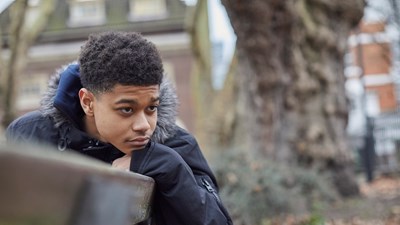Notes:
• We first called for online safety regulation in April 2017. We sent Freedom of Information requests and asked for data on recorded offences of Sexual Communication with a Child offences (Communicating Indecently with a Child in Scotland) from all UK police forces since the offence was introduced in 2017 (see timeline below for further details).
• Over the six-year period data from the 42 police forces in England, Wales Scotland and Northern Ireland, excluding British Transport Police, shows there were 33,959 offences recorded.
• In 2022/23 6,350 offences were recorded (42 forces), up 82% from the 3,492 recorded by the same 42 forces in 2017/18.
• Police forces were asked for a gender breakdown. They gave a gender breakdown in 21,890 instances. This means at least 21,000 victims were identified. Where a victim’s gender was known, 17,844 were female and 3,764 were male, meaning girls made up 83% of known victim gender.
• Police forces were asked for the social media platforms used to commit offences (the means of communication). The means of communication was provided in 13,975 instances. Snapchat was used in 3,692 instances (26%), Facebook/Facebook Messenger in 2,132 (15%), Instagram in 3,593 (26%) and WhatsApp in 890 (6%).
• A recorded offence could involve more than one victim and multiple means of communication.
• In total 150 different social media sites, apps, games, dating sites and websites were flagged by police as involved in Sexual Communication with a Child offences.
• Some police forces used a key word search to identify the means of communication.
Online Safety Bill Timeline:
2014 - We launched a campaign calling for a new offence to make online grooming a crime, by making it illegal for an adult to send a child a sexual message. 50,000 people signed our petition
2015 - The government included the offence in the Sexual Offences Act 2015, but it took two more years of sustained campaigning before they finally brought the offence into force so police could take action and arrest offenders
2017
- April - Sexual Communication with a Child became an offence. We first called on the government to bring in statutory regulation of social networks
- December - We call for tech companies to have a legal duty of care to keep children safe
2018
2019
- February - Taming the Wild West Web was published outlining a plan for regulation
- April - The government publishes the Online Harms White Paper
2020
- January - Online Harms paving bill, prepared by the Carnegie Trust and introduced by Lord McNally, was selected for its first reading in the Lords
- February - Government publish initial consultation to the Online Harms White Paper, announcing Ofcom as the likely watchdog
- September - NSPCC sets out six tests for the Online Harms Bill in its Regulatory Framework
- December - Government published its Online Harms White Paper consultation response
2021
- March - NSPCC analysis of the consultation response found significant improvement is needed in a third of areas of proposed legislation if the Online Safety Bill is to extensively protect children from avoidable harm and abuse
- May - Government publishes draft Online Safety Bill
- September - Parliamentary scrutiny begins, and the NSPCC publish Duty to Protect - An assessment of the draft Online Safety Bill against the NSPCC’s six tests for protecting children
- October - Facebook whistleblower Frances Haugen gives evidence to the Joint Committee on the Draft Online Safety Bill
- December - The joint committee on the Draft Online Safety Bill call for a number of changes to the legislation to better prevent child abuse
2022
- January - DCMS Committee back NSPCC’s call for the Online Safety Bill to put a legal duty on tech firms to disrupt the way offenders game social media design features to organise around material that facilitates abuse. The Petitions Committee also called for the Online Safety Bill to be strengthened.
- March - NSPCC urge Government to listen to the overwhelming consensus of Parliamentarians, civil society and the UK public to close significant gaps in the way Online Safety Bill responds to grooming. The Government publishes the Online Safety Bill
- April - Online Safety Bill has its Second Reading and NSPCC publish its Time to Act report which sets out where the Bill can be improved to become a world-leading response to the online child abuse threat
- May - Online Safety Bill Committee Stage begins
- July - Online Safety Bill Report Stage debates
- Summer - Online Safety Bill delayed by two changes to Prime Minister
- September Inquest into the death of 14-year-old Molly Russell finds social media contributed to her death
- December Online Safety Bill returns to Parliament. Bereaved Families for Online Safety formed to campaign for strong protections for children and families through the Online Safety Bill
2023
- January - Conservative MP rebellion backs NSPCC amendment that forces Government to commit to holding senior tech managers liable for harm to children. Online Safety Bill begins its journey through the House of Lords
- Spring - Government amendments strengthen protections for children following campaigning by civil society, including NSPCC and Bereaved Families for Online Safety
- September - Online Safety Bill due its Third Reading in the House of Lords and to return to Parliament for final passage






